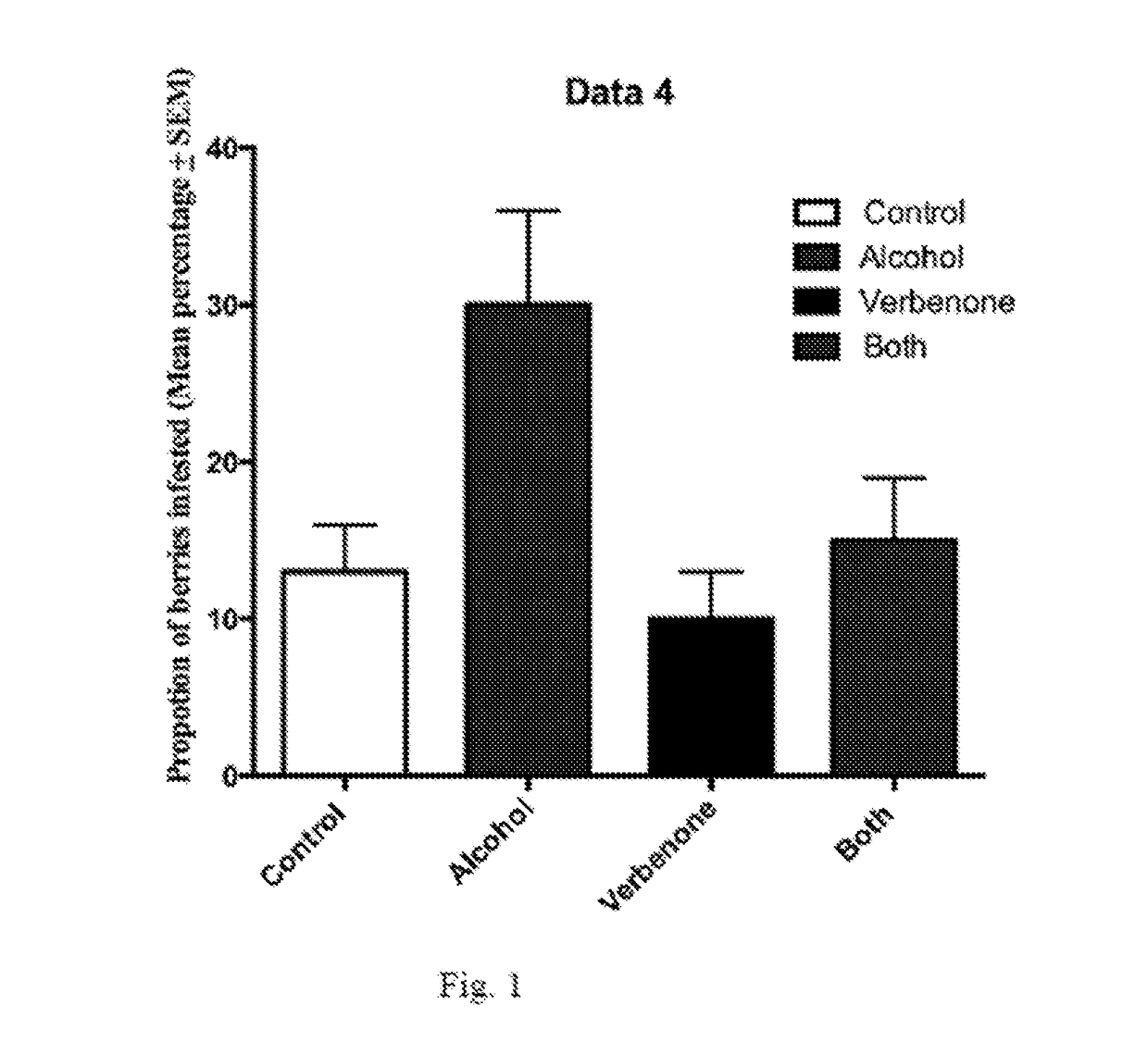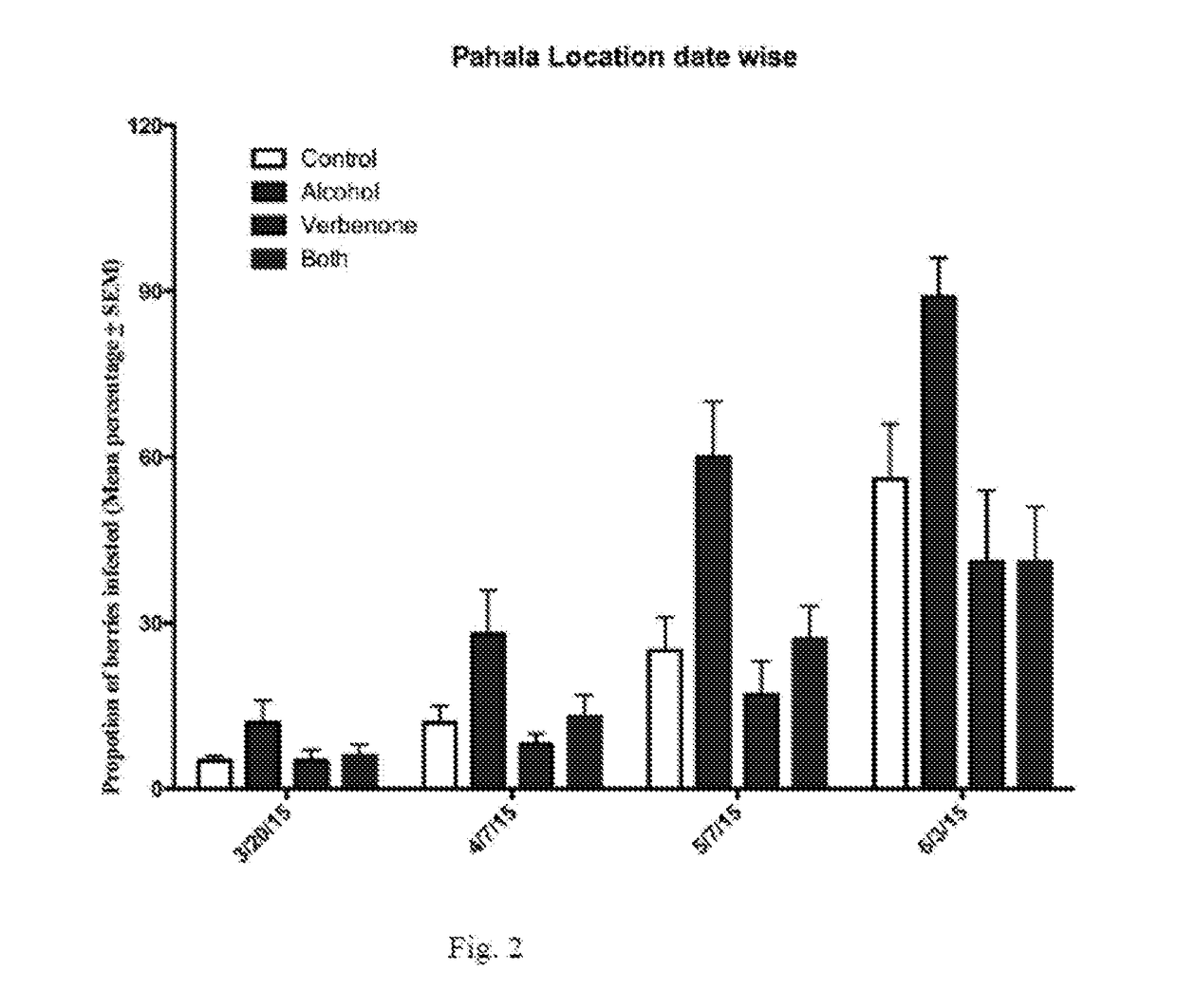Compositions and methods for repelling coleopterans
a technology of coleopteran and cbb, applied in the field of coleopteran control products, systems and methods, can solve the problems of reducing the availability of cbb, reducing the effectiveness of cbb control measures, and causing greater losses, so as to improve the accessibility of cbb and improve the implementation of control measures.
- Summary
- Abstract
- Description
- Claims
- Application Information
AI Technical Summary
Benefits of technology
Problems solved by technology
Method used
Image
Examples
Embodiment Construction
[0047]The detailed description set forth below is intended as a description of the presently preferred embodiment of the invention, and is not intended to represent the only form in which the present invention may be constructed or utilized. The description sets forth the functions and sequences of steps for constructing and operating the invention. It is to be understood, however, that the same or equivalent functions and sequences may be accomplished by different embodiments and that they are also intended to be encompassed within the scope of the invention.
[0048]Semiochemical formulations should exhibit a zero-order-release rate and sustain release levels above a certain threshold for a long period of time, wherein release levels below threshold would only have a negligible disruptive effect on the behavior of the target insect. With a couple of exceptions, when formulated with less than 10% active ingredient (AI) Specialized Pheromone and Lure Application Technology (SPLAT) cons...
PUM
 Login to View More
Login to View More Abstract
Description
Claims
Application Information
 Login to View More
Login to View More - R&D
- Intellectual Property
- Life Sciences
- Materials
- Tech Scout
- Unparalleled Data Quality
- Higher Quality Content
- 60% Fewer Hallucinations
Browse by: Latest US Patents, China's latest patents, Technical Efficacy Thesaurus, Application Domain, Technology Topic, Popular Technical Reports.
© 2025 PatSnap. All rights reserved.Legal|Privacy policy|Modern Slavery Act Transparency Statement|Sitemap|About US| Contact US: help@patsnap.com


